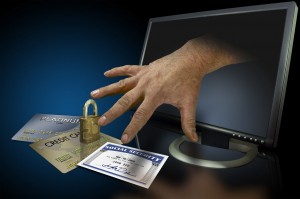
At least 110 million consumers were affected by the hack involving Target and Neiman Marcus retailers. Whether or not millions more will have their identities manipulated and finances ruined within the coming months due to more breaches of security at other stores is anyone’s guess, says identity theft recovery expert Scott A. Merritt.
“By necessity, I became an expert on identity theft. My information was stolen in 2006, and in repairing the damage, I learned some not-so-obvious ways we can all protect against identity theft in the first place,” says Merritt, CEO of Merritt & Associates (scottamerritt.com) and author of “Identity Theft Do’s and Don’ts.”
Merritt’s problems began quickly. While disputing financial charges and dealing with resulting business problems, in 2007 he was stopped for a traffic violation and arrested on a false outstanding felony warrant. He immediately knew why.
“I had to enlist my U.S. congressman and convince the state police, NCIC, FBI and Secret Service that I didn’t commit the felonies. I had to prove that the prints did not match the false record in question. After legal action, however, I was able to have this corrected.”
Before you become a victim of identity theft, Merritt offers seven ways to guard against it.
• Understand how and where it happens. Most thefts occur in places where you do business every day. A place of business is robbed, a bad employee acts improperly or a hacker breaches the office through the computer.
• Secure your wallet’s information. Photocopy everything in your wallet: photos, credit cards (front and back), membership cards – everything. Put the copies in the order the cards are arranged in your wallet, staple the pictures and place them in a strongbox or safe.
• Make sure your information is consistent. For all of your identity and financial documents, make sure, to the smallest detail, that all of your personal information is accurate and consistent! Discrepancies such as using your middle initial on some documents, and not others, or having different addresses, can wreck havoc in proving your identity, and can compromise your credit score.
• Secure your digital habits and data. Change your passwords at least twice a year on a non-scheduled basis – don’t be predictable. Have a strong firewall if you shop online, and only access known sites that are protected by a strong firewall and high industry standards. Access accounts of a financial nature only from your personal computer, not from your cell phone or tablet.
• Protect your banking information. While in the bank, keep account numbers and other data out of sight, and avoid saying out loud your account numbers, Social Security numbers and similar information. When visiting a bank, have items such as deposits and withdrawal slips prepared in advance.
• Account for your interactions with vendors. Whenever talking on the phone with someone with whom you’re doing business such as a credit card account, write down the time, date, name and the purpose or outcome of the call. If an identity theft occurs on the vendor’s end, you will be able to reference these prior conversations effectively. Be sure to note problems with the vendor.
• Don’t carry your birth certificate or Social Security card on your person. Keep those vital items in a safe, or a firebox. If someone is going to need a copy of your tax returns or your driver’s license, make the copies ahead of time for the firm’s employee.
• Consider going back to cash. You can greatly reduce being a victim of hacks such as those that occurred recently at major retailers by using cash. However, if you’re going to use credit, use a Visa, Master Card, Discover Card, American Express Card, a card issued by your bank or credit union and avoid using debit cards.